
Removal of Zirconia Implant and Replacement with Zeramex XT
Implant surgery cases do not always go as planned. This Zeramex P6 zirconia implant was not placed in a good position. It was placed too close to the tooth behind it and not down deep enough into the gum. In technical terms the zirconia implant was placed too far distally and too high coronally. The placement was initially workable, but when teeth are removed, other teeth can shift. The implant healed well, but the implant was not in a useable position. There literally was not enough room to fit a crown on top of the implant. The implant need to be replaced with a properly positioned implant.
The Zeramex XT and the Nobel Pearl implant are the same exact implant. They are both brands of the same implant manufactured by Dentalpoint.
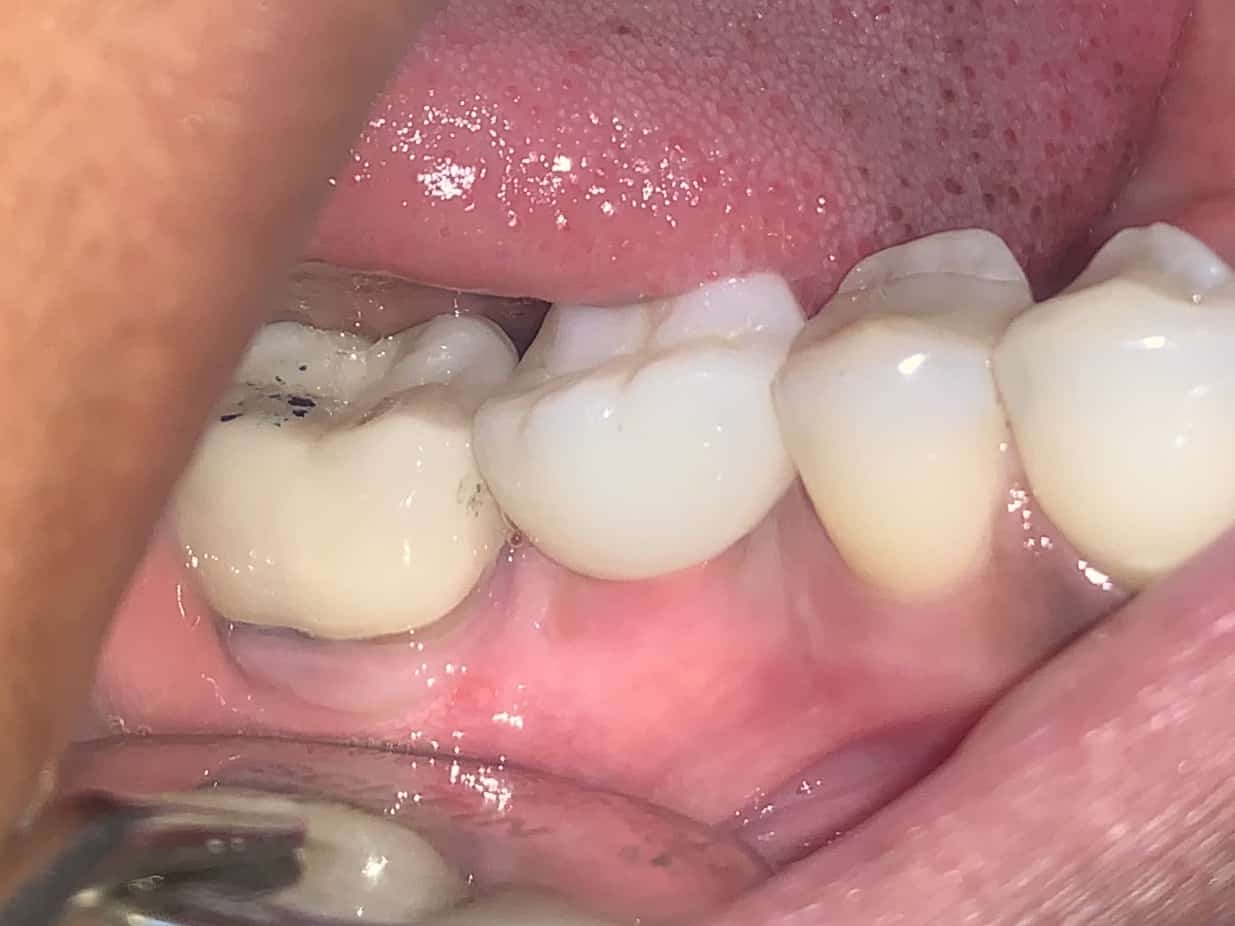
Final Zeramex XT Implant Photo
Ceramic implant is too close to neighboring tooth
The implant was too coronal (high in the jawbone) and there was not enough room to put a replacement tooth on top of the implant. The P6 implant requires more room for the crown on top because the connection between the crown and the implant sits up higher than most other implants on the market. This is not a problem if the implant surgeon plans accordingly. Zirconia implant surgery requires the utmost precision due to implant design considerations and limitations in abutments available. Abutments most often can be bought premade, “pre-fabricated abutments” or custom made “custom abutments.” Custom abutments can sometimes correct for poor implant surgery and poor placement issues. Unfortunately most zirconia implant manufacturers only sell pre-fabricated abutments. Limitations in zirconia vs titanium materials and FDA problems have made getting custom abutments for zirconia implants difficult. There are some labs that can create custom abutments from a prefabricated abutment if need be.
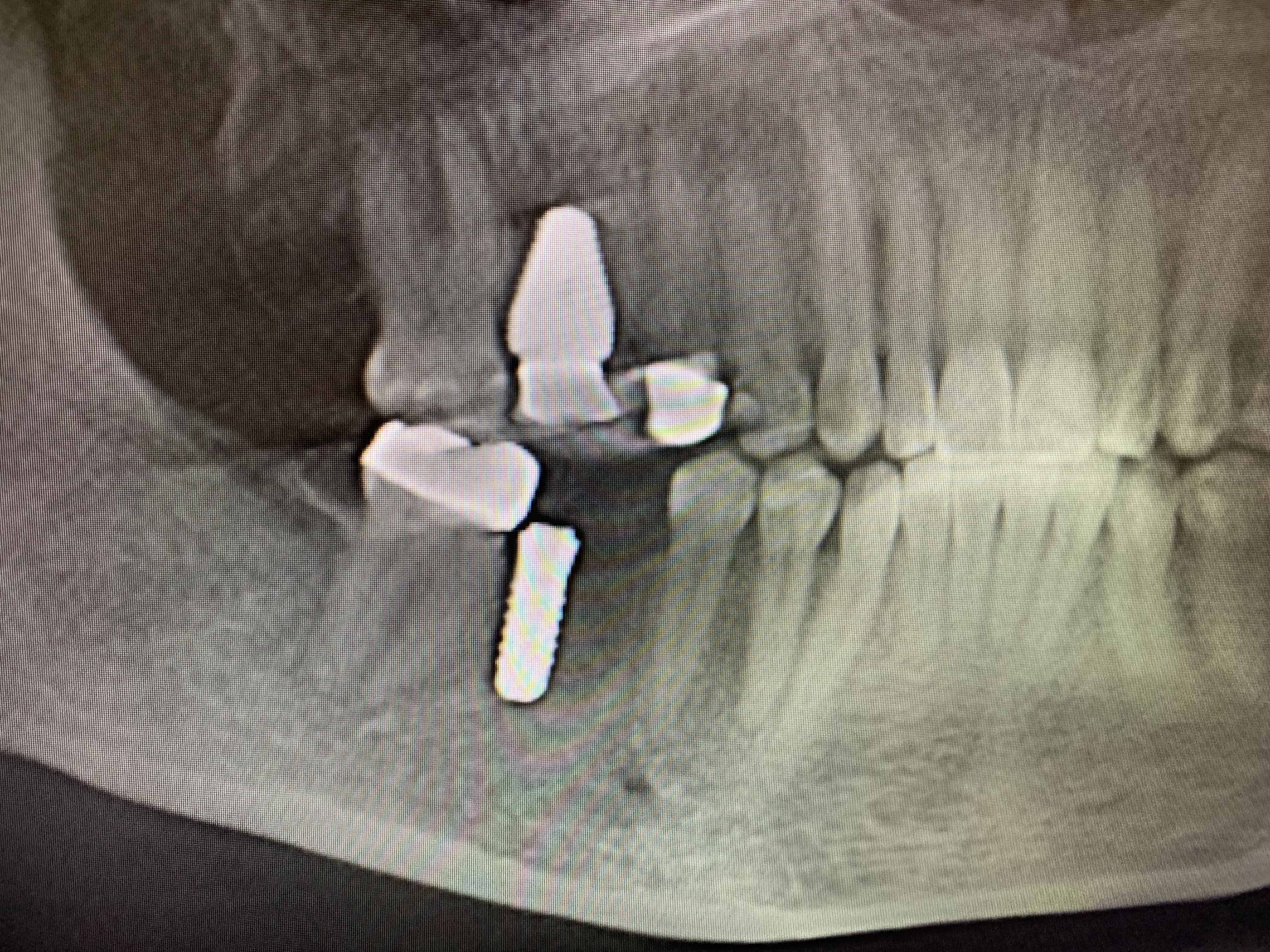
zirconia p6 implant removal2
Zeramex XT Immediate Implant Placement
Notice how the P6 implant has been removed and the new implant is placed deeper into the mandibular jaw bone and more in the middle between the two teeth. Notice also the shape difference between the two different implants. Long story short, without getting too technical, the design of the XT implant allows the implant to be placed deeper into the bone than the P6. And the XT requires much less room for the connection between the implant and the tooth on top. The tapered design makes placing the XT into a stable position much easier (even in tricky shaped bony sites). These three considerations make placing the Zeramex zirconia XT implant much easier than the P6. It also makes placing a zirconia implant much more possible, in situations where previously only titanium implants were possible.

zirconia p6 implant removal3
Surgical Removal of Zeramex P6 Implant
P6 implant was flapped open with a minimal full thickness flap, troughed, elevated and reversed with a torque wrench and fixture mount. After P6 removal, a modified osteotomy was performed for placement of the XT implant. The XT implant was placed with a mixture of allograft and PRF into the remaining bony defects.

IMG 1892
Zeramex P6 Extraction Socket
Notice in the implant extraction site how the bone had grown around and attached to the P6 Implant threads. The smaller threads of the P6 likely allowed for easier removal of the implant. An integrated Zeramex XT will not extract as easily.
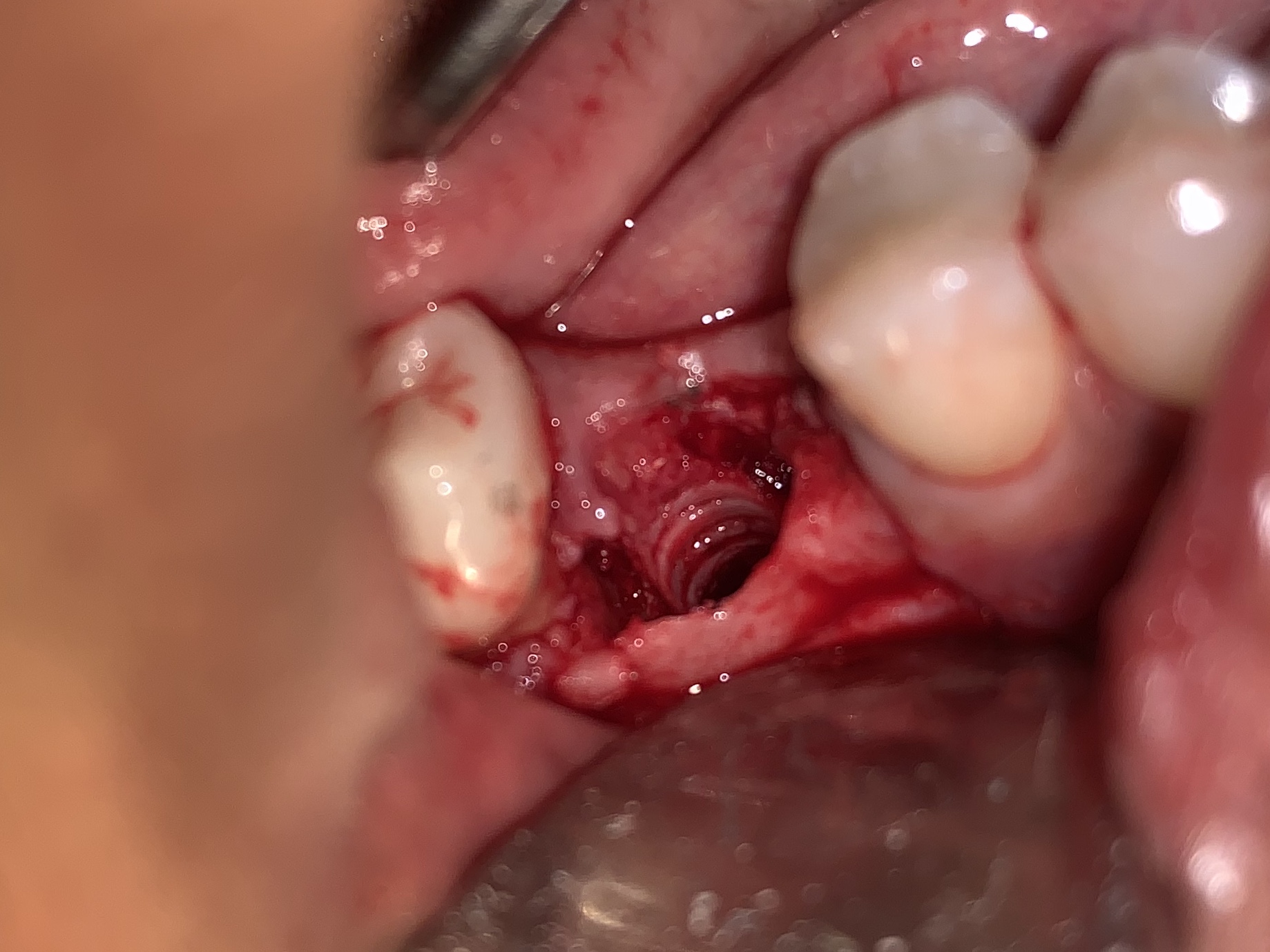
zeramex p6 removal site
Immediate Zeramex XT Implant Surgery
Implant placement with PRF bone graft in place. Angle of photo is not centered. The implant is centered between the teeth. Below is the final placement with proximation and PRF closure. A cover screw has been place and if need be a secondary uncovering procedure will be performed. The Zeramex XT system has 3mm and 4mm healing caps that can be used coincident with uncovering surgery.
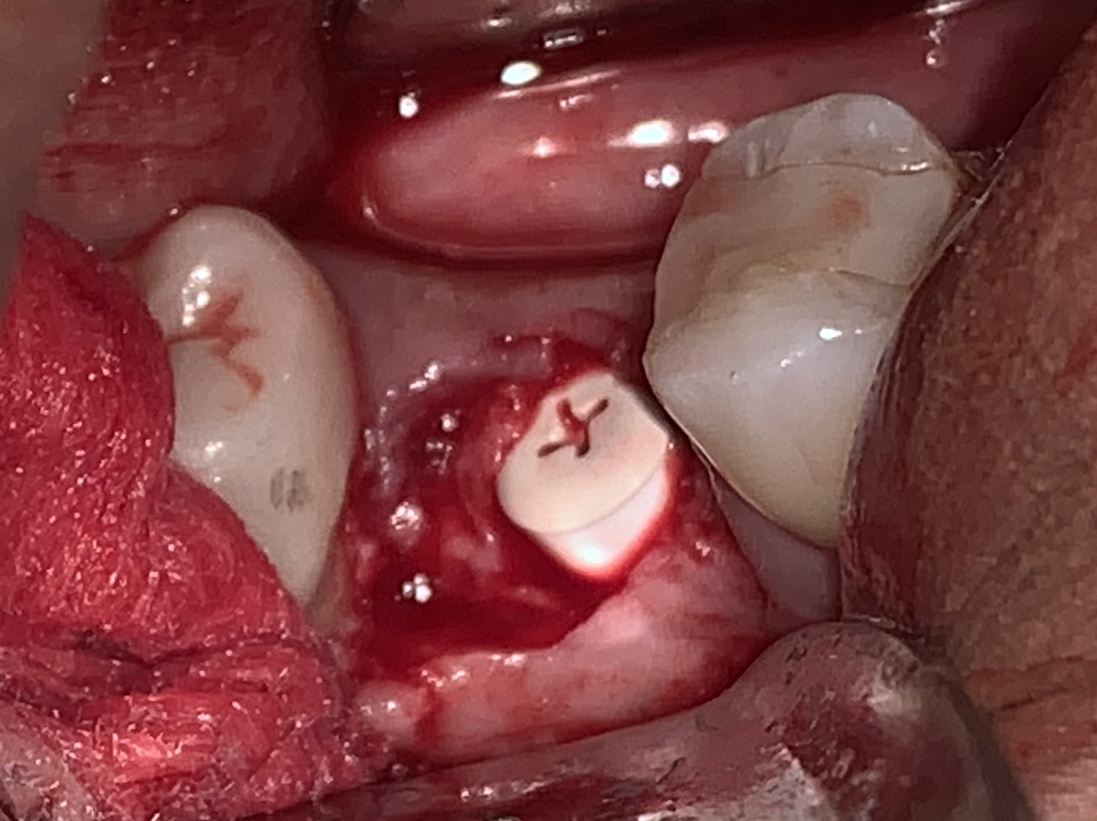
zeramex xt implant placement final
Post op photo of Zeramex XT Implant Surgery
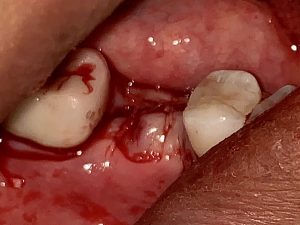
Zeramex XT Implant after Healing 3 months
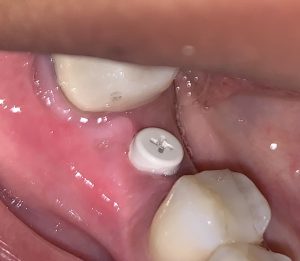
Zeramex XT Healing after partial uncovering and placement of 3mm tissue former/healing cap.
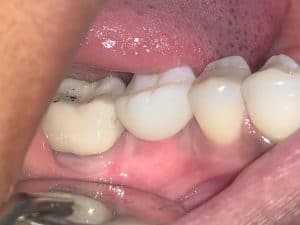
Things that stayed the same with P6 and XT implants:
The excellent zirconia (zirconium dioxide ATZ) and Zerafil implant surface technology.
Zeramex XT vs P6

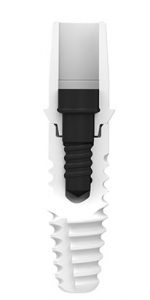
- XT has a deeper connection between the implant and the abutment. Zeramex has classified this as an “internal connection.” Technically the XT abutment connects internally but the abutment still sits on top of the implant body. Most “internal connection” systems have the abutment sitting completely inside of the implant body. Since the XT sits on top of the implant body, the XT is not truly a “bone-level” implant because an interface of two parts should not occur at bone level. Obviously there can be flexure about the abutment and the implant body during chewing forces. Zeramex recommends the placement of the XT as deep as 0.6mm above bone level and as high as 1.6mm above bone level. More research should be done on how much if any flexure occurs about the abutment/implant interface. Zirconia is a very brittle material that really does not flex like titanium. Perhaps the XT at bone level is not a problem with zirconia as it is with titanium implants.
- XT has more implant threads that are larger than the P6 design. More and larger threads means more bone to implant interface and a stronger and faster osseointegration. Such a thread design also means easier and more stable surgical placement.
- XT has a tapered design. A tapered design with deep threads is ideal for immediate implant surgery or placement of the implant on the same day as extraction. With a tapered design, the XT can be placed and stabilized into all different sized and shaped bone.
- XT has a smaller screw. A smaller screw meaning the screw is not as wide and is not as tall as the P6 screw. This is no “small” detail. Wide screws do not work well when doing screw-retained crowns because the access hole in the crown is large (at least as wide as the screw) and impacts the functional shape of the crown. The P6 works better with cement retained crowns for this reason. The XT screw is also not as tall. In limited height situations, the height of the P6 screw can literally cause the implant design not to work at all because the screw sits up so high there may not be enough height to cement retain a crown. The case presented here is one of those cases, but in this case the implant could have been placed deeper. In some cases the implant cannot be placed deeper and the P6 design is not workable.
- XT screw has more threads. More threads means the screw needs to be turned more times around prior to it getting tight and secure. This feature makes it easier to try-in abutments, impression copings and healing caps. More threads means fewer healing caps coming loose when they are hand tightened. And more time to finagle the orientation of an abutment in soft tissue during a try-in.
- XT connection is not an “internal hex” but rather an “internal quad”. This means the indexed XT abutments when seated can be placed in fewer different orientations than the P6. Most of the time, this does not matter unless an angled Zeramex XT abutment is placed. Special attention to the final angular position is important to consider. The angular positions for abutment placement with the XT are 12, 3, 6, and 9 O’clock positions or quite literally at 90 degree positions. What if you want the angled abutment at the 45% position or a lot more of the abutment needs to be prepped?
Implant Planning is very Important
In our office we do titanium and zirconia implants. There are many reasons why not to do zirconia implants. And there are many reasons to do zirconia implants. The same can be said of titanium. All things equal, we prefer to use zirconia because the material is more biocompatible, looks better and gum tissue is healthier around it. Since the release of the XT, we have been able to use the Zeramex XT in many more cases that previously required titanium.
- Cases with less than 6-8mm of restorative room
- Cases requiring screw retention that were not molars or large teeth
- Cases where immediate placement was much preferable and primary stability an issue
- Cases where 2 stage surgery and bone level placement is indicated
- Multi unit bridge cases where screw retention is preferable

 (301) 421 1996
(301) 421 1996 burtonsvillesmiles@gmail.com
burtonsvillesmiles@gmail.com